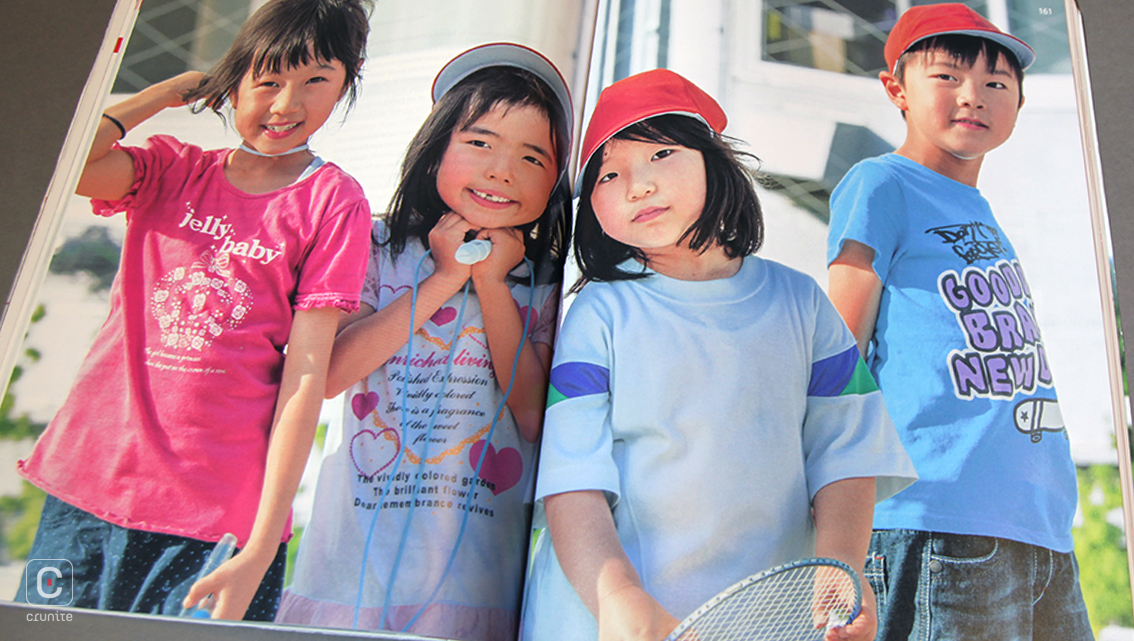
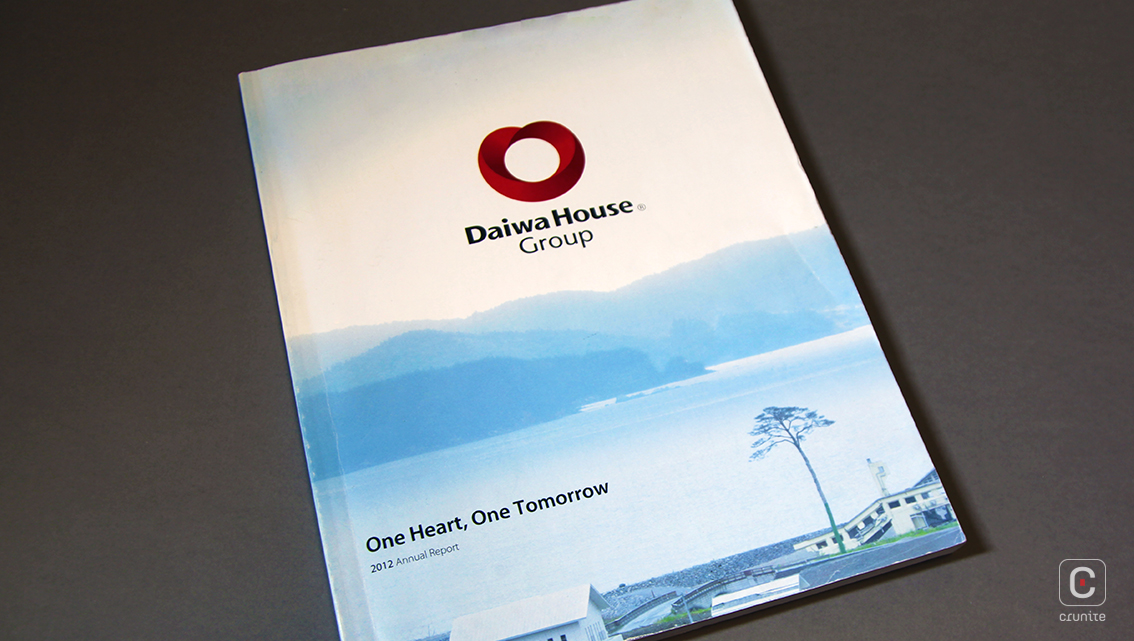
Daiwa House is a construction company and is Japan’s largest homebuilder. While they specialise in prefabricated housing, the group also constructs and manages properties ranging from factories to golf courses. The English version of the Daiwa House Group report is efficient – information is presented logically and clearly.
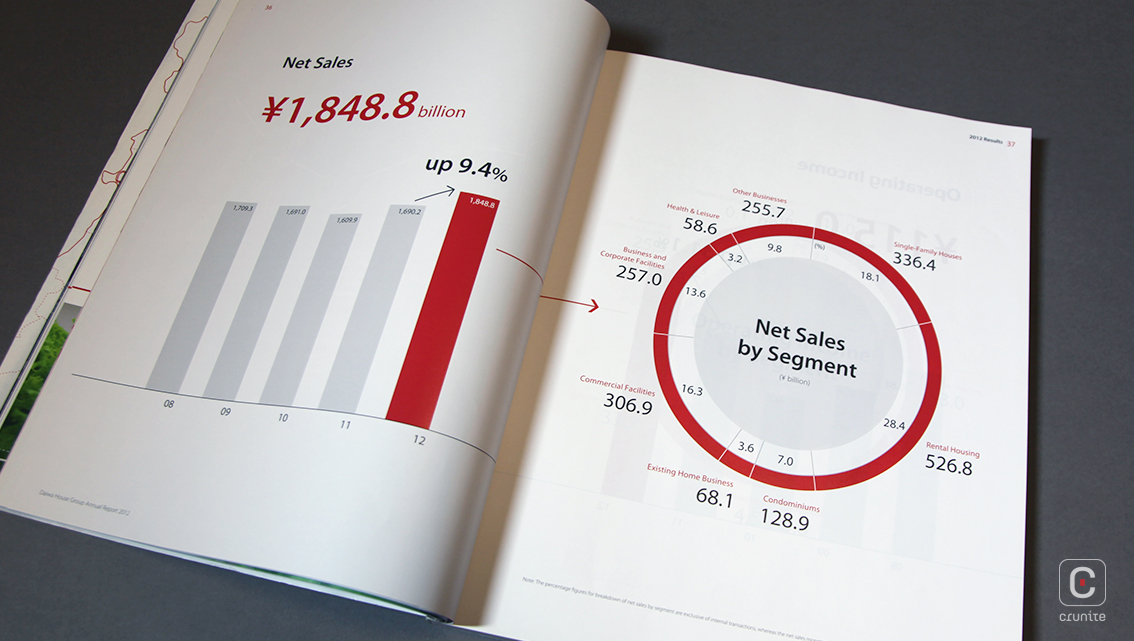
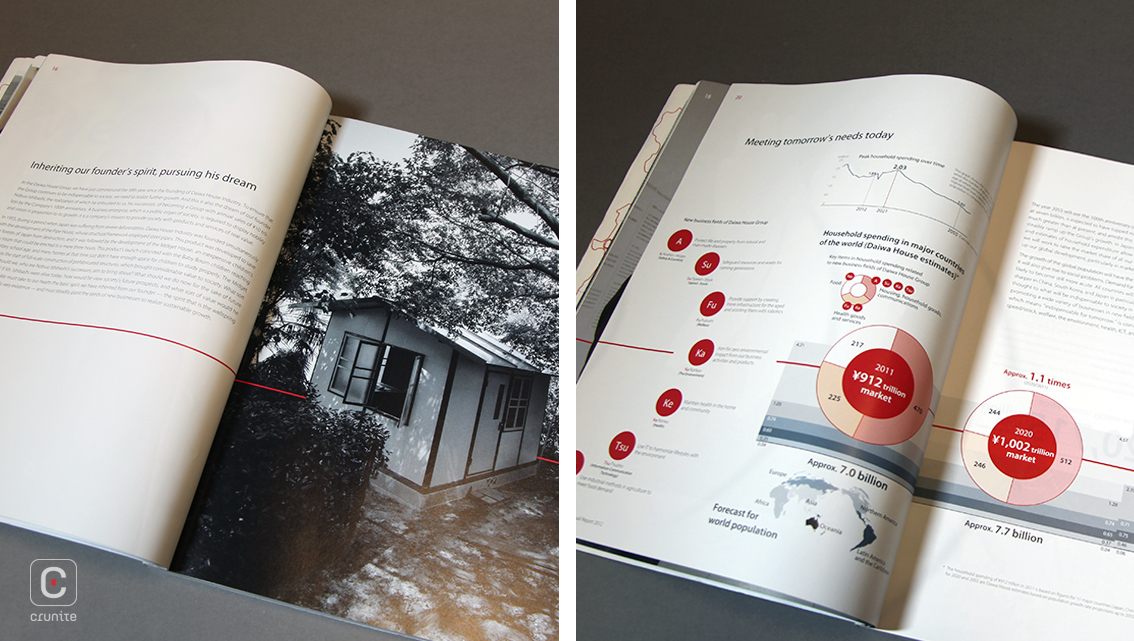
Where it shocks and excels is in its 12 opening pages. The cover shows a calming image of a large body of water surrounded by soft hills on one bank and the edges of a town on the other – a lake perhaps, or a narrow portion of the Inland Sea. Turn the cover however and you are met with a scene of startling destruction – the 2011 tsunami. The image is horrifying in scale and impact.
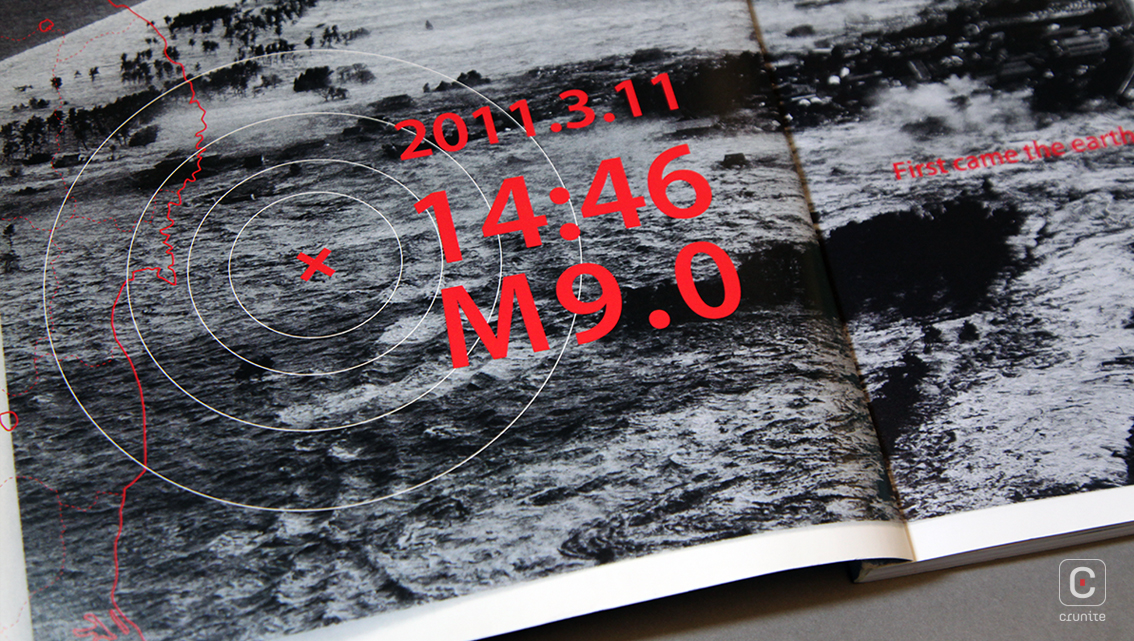
Having thus secured the reader’s attention, the subsequent ten pages tell a tale of slow but determined recovery, using photography and a single sentence fragment worthy of the opening of a novel – “First came the earthquake and then a massive tsunami”.
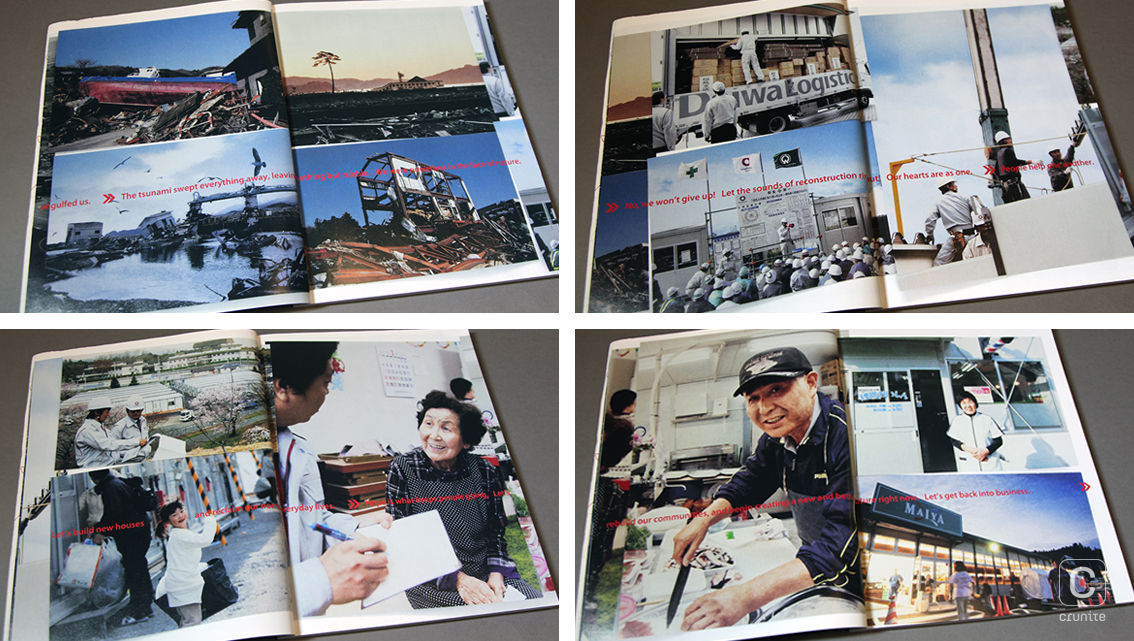
The treatment of the text is worth noting. It begins as a single sentence on the opening double-page spread and the story continues over the next ten pages.
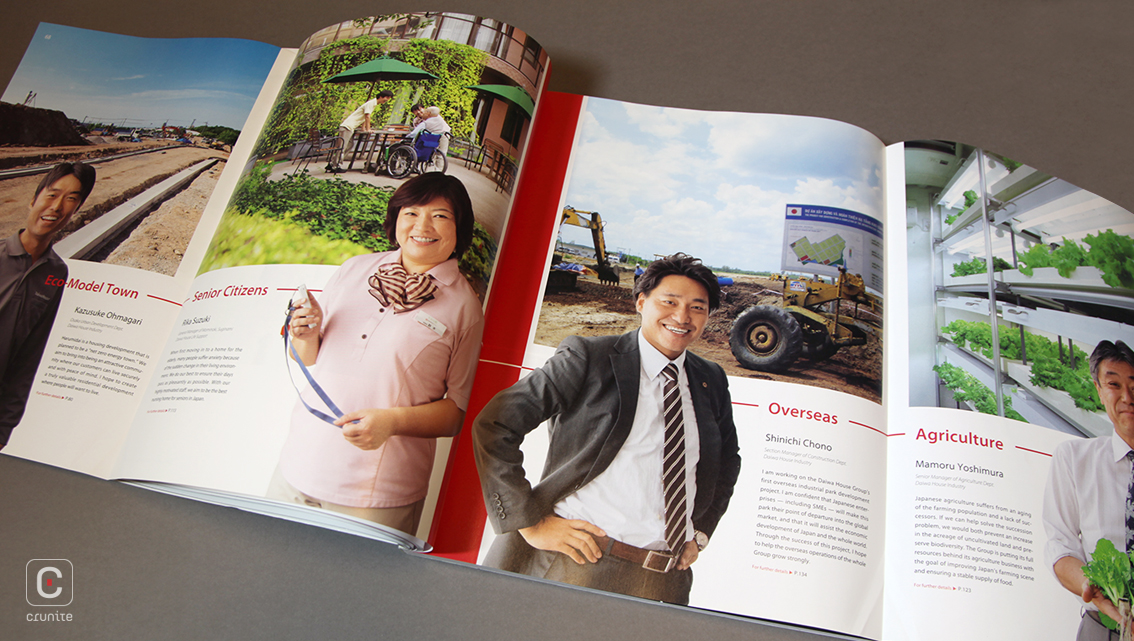
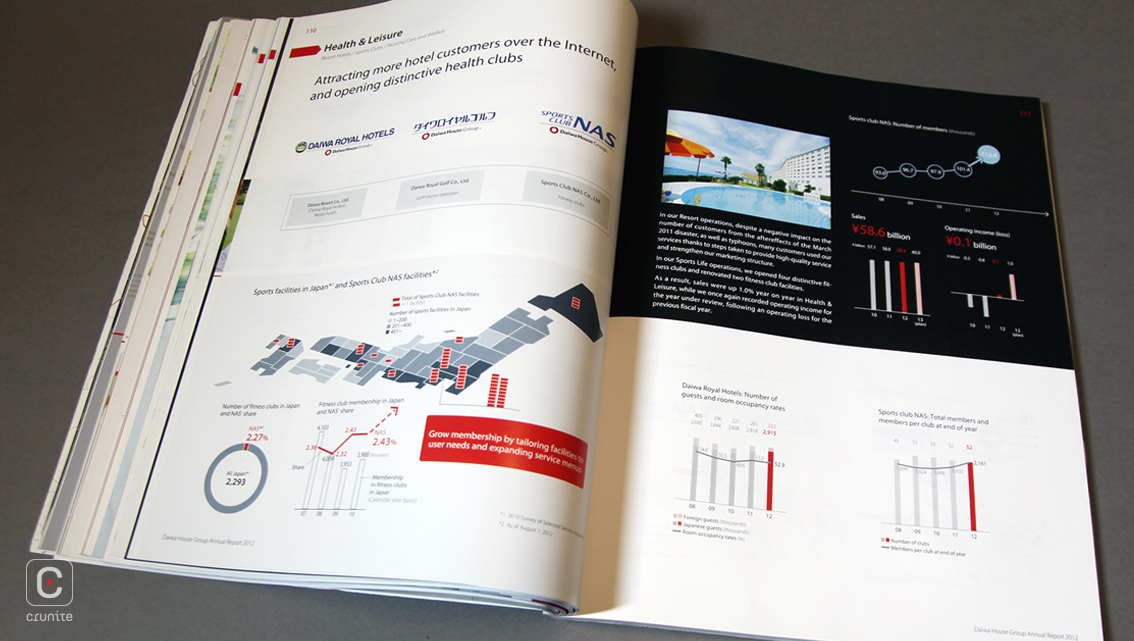
The layout of the this narrative uses an almost subliminal trick to pull the reader along – on the right page edge are slivers of the images that will appear on the next two pages. As the line of text us the reader along, so do these subtle image fragments.
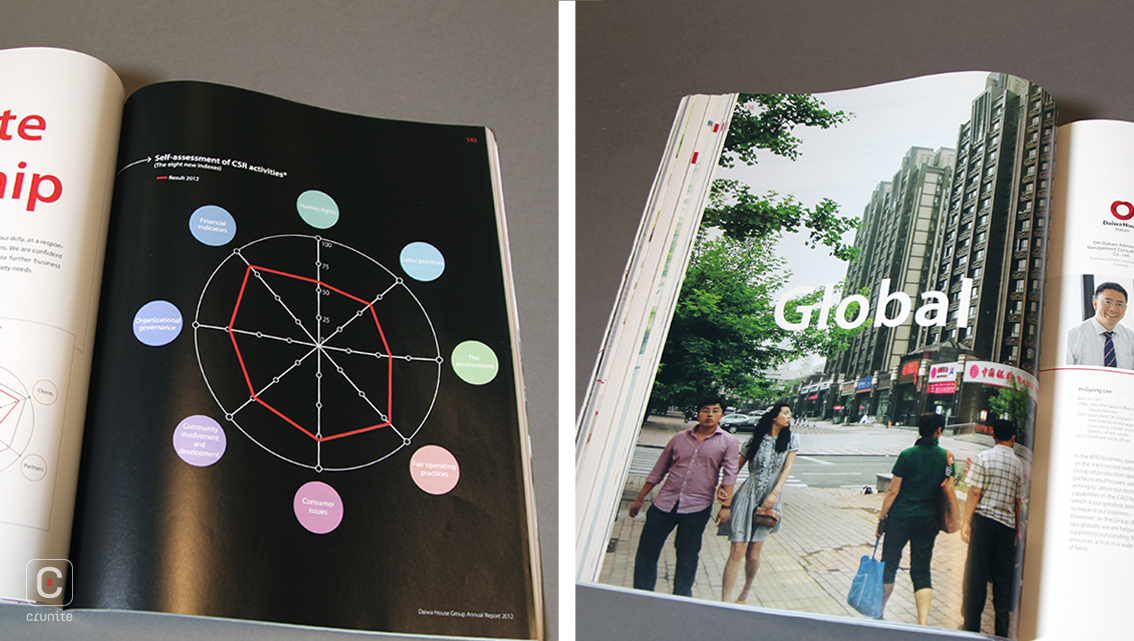
There is a lightness of touch in the rest of the report – a low-weight sans serif, generous leading, a simple colour palette and matte white paper make the pages feel airy and easy to read. And all the while, the design of those opening pages lingers on…
